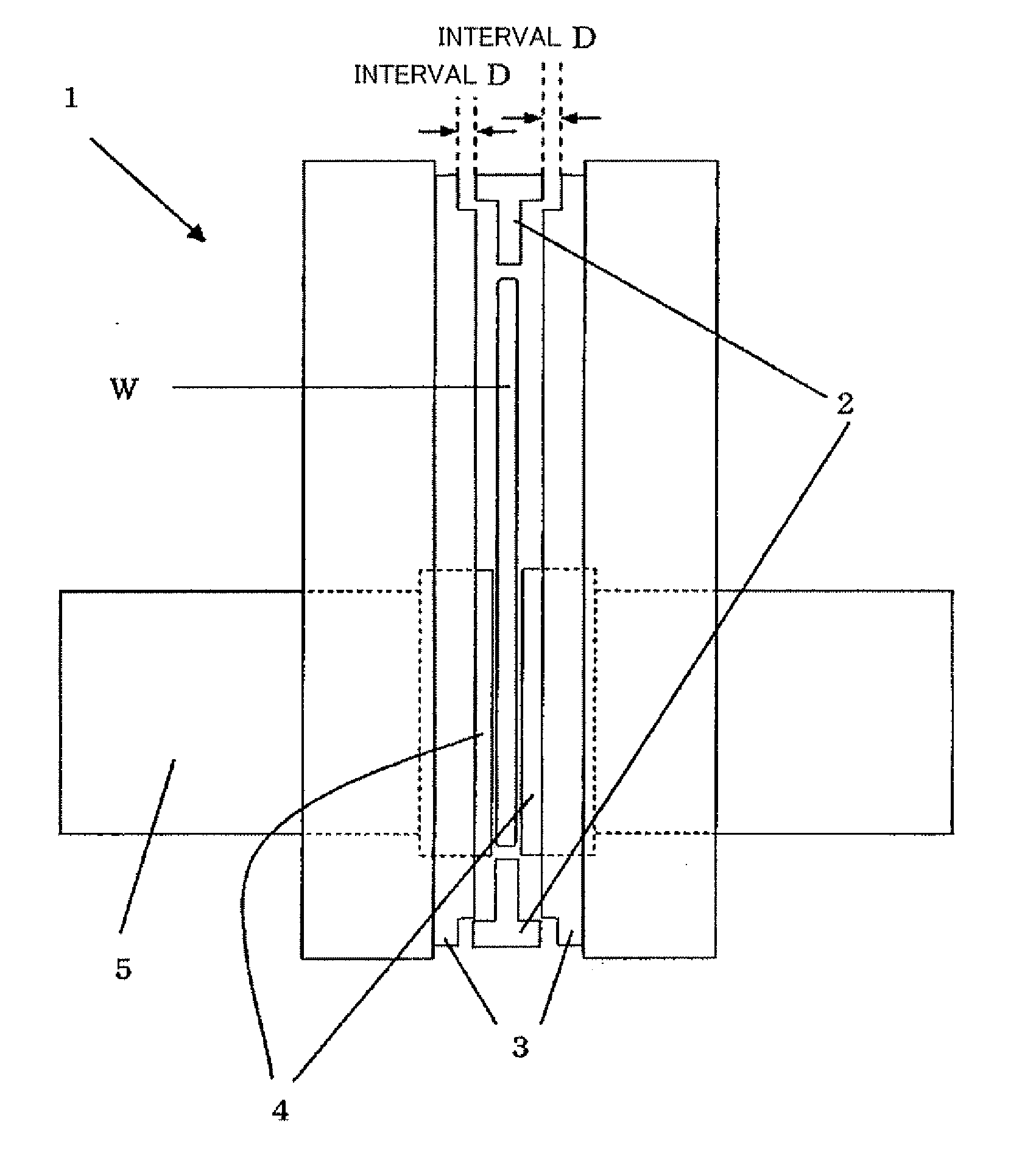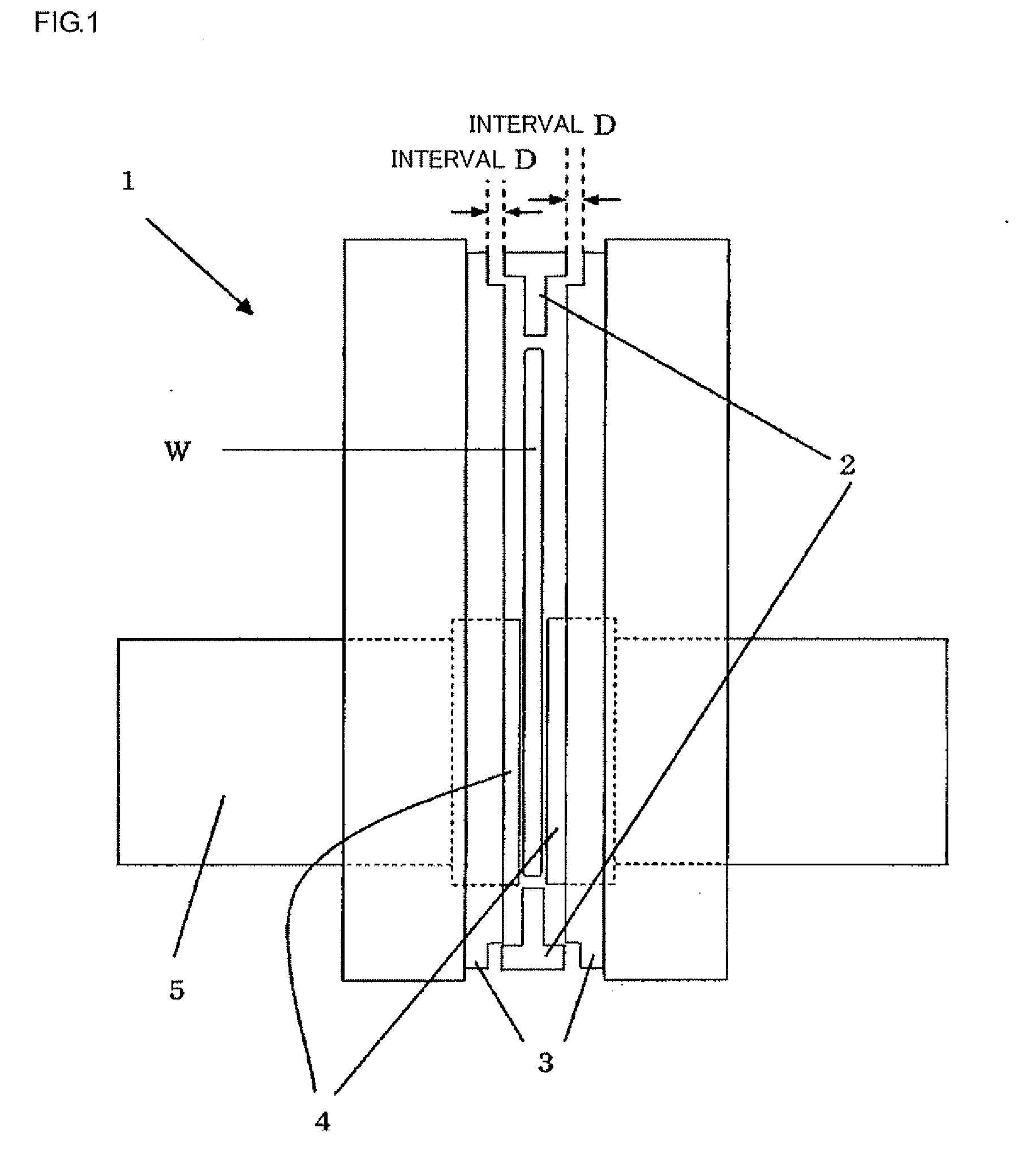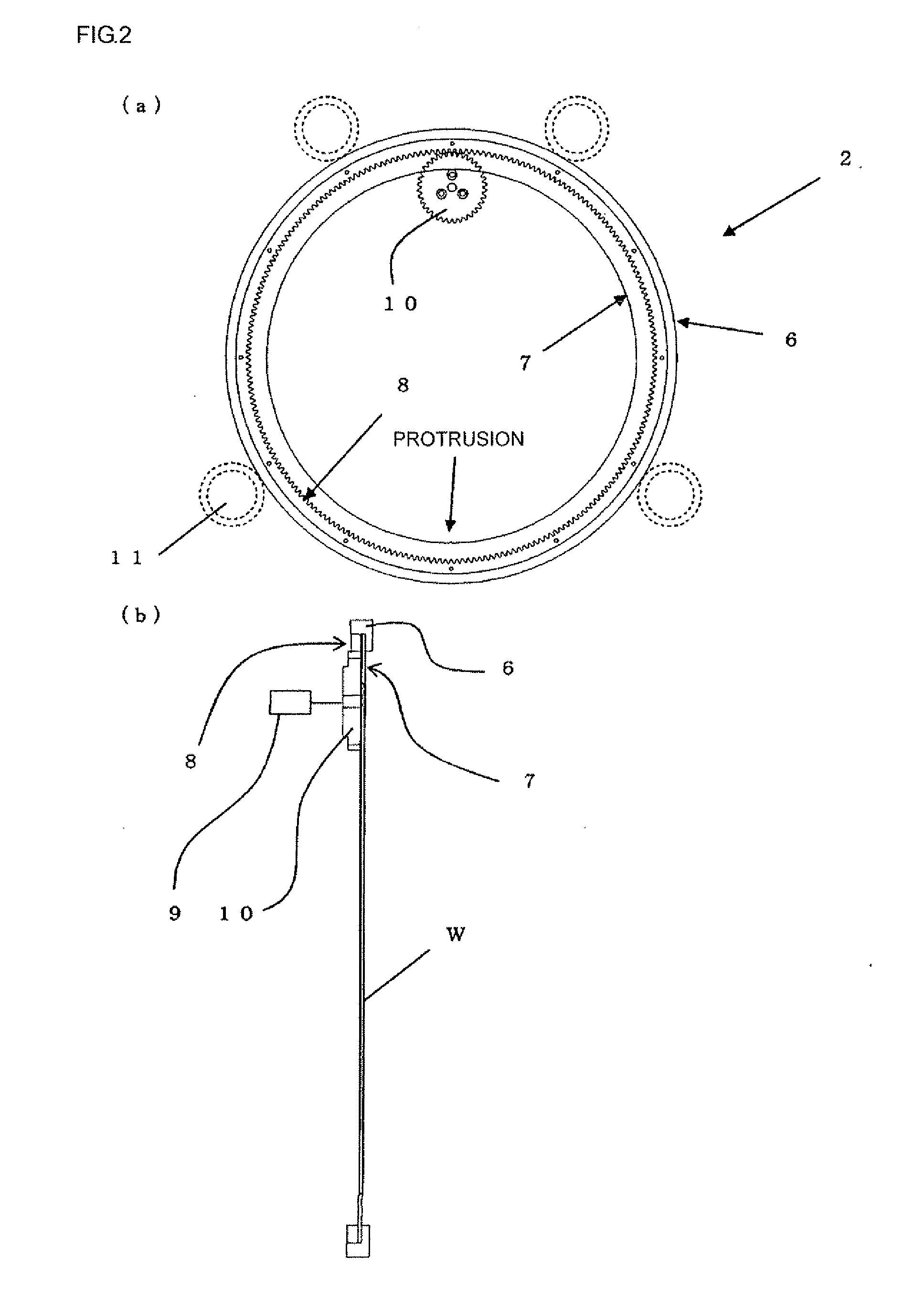Workpiece double-disc grinding apparatus and workpiece double-disc grinding method
a technology of workpieces and grinding equipment, which is applied in the direction of grinding machines, edge grinding machines, manufacturing tools, etc., can solve the problems of difficult suppression of nanotopography to a level recently demanded, the magnitude of a surface waviness component called nanotopography has recently become a problem, and the nanotopography level is over 15 nm, etc., to achieve a sufficiently suppressed nanotopography, the effect of increasing the size and reducing the size of the work
- Summary
- Abstract
- Description
- Claims
- Application Information
AI Technical Summary
Benefits of technology
Problems solved by technology
Method used
Image
Examples
example 1
[0104]By using the double-disc grinding apparatus 1 according to the present invention depicted in FIG. 1, double-disc grinding of a workpiece (a silicon wafer having a diameter of 300 mm) was curried out based on the double-disc grinding method according to the present invention.
[0105]As a workpiece holder, one having a ring portion formed of alumina ceramics was used. The workpiece holder has flatness of 5 μm and parallelism of 5 μm, and static pressure support members have flatness of 15 μm.
[0106]An interval between the workpiece holder and each static pressure support member was set to 30 μm. Furthermore, water was supplied from supply holes of each static pressure support member, and the workpiece holder was supported in a contactless manner based on a static pressure of 0.6 MPa. Moreover, as grinding stones, a grinding stone SD #3000 and a grinding stone SD #8000 that are formed of diamond abrasive grains having an average grain size of 1 μm or below and a vitrified bond (vitr...
example 2
Comparative Example 2
[0113]Double-disc grinding for a workpiece (a silicon wafer having a diameter of 300 mm) was performed like Example 1 except that the grinding stone SD #8000 was used as each grinding stone and a static pressure value of water was changed and set.
[0114]The static pressure of water was set to 0.3 MPa, 0.8 MPa and 1.0 MPa (These are Example 2), and 0.2 MPa (Comparative Example 2).
[0115]FIG. 7 shows a static pressure value of water and a result of a pseudo-nanotopography of each ground workpiece. It is to be noted that a value of the pseudo-nanotopography according to Example 1 is also shown as a reference (a value when a hydrostatic pressure is 0.6 MPa).
[0116]The pseudo-nanotopography is as large as 0.8 μm in Comparative Example 2, and the pseudo-nanotopography was suppressed to 0.2 μm or below under each hydrostatic pressure in Example 2.
[0117]As described above, when the static pressure value is smaller than 0.3 MPa, the pseudo-nanotopography becomes considerabl...
PUM
| Property | Measurement | Unit |
|---|---|---|
| Length | aaaaa | aaaaa |
| Length | aaaaa | aaaaa |
| Length | aaaaa | aaaaa |
Abstract
Description
Claims
Application Information
 Login to View More
Login to View More - R&D
- Intellectual Property
- Life Sciences
- Materials
- Tech Scout
- Unparalleled Data Quality
- Higher Quality Content
- 60% Fewer Hallucinations
Browse by: Latest US Patents, China's latest patents, Technical Efficacy Thesaurus, Application Domain, Technology Topic, Popular Technical Reports.
© 2025 PatSnap. All rights reserved.Legal|Privacy policy|Modern Slavery Act Transparency Statement|Sitemap|About US| Contact US: help@patsnap.com



